Olivia Esther Matamoros Chávez won’t watch her son compete.
Not live, anyway. She stays away from the stadiums or TV screens, and will only watch the replay after she’s spoken to her son. She only watches once she knows he’s escaped injury.
“I don’t like to see him when he’s doing that bicycle stuff,” says Olivia Esther, who is better known in her hometown of Bijagua, in northern Costa Rica, as Tey. “But we’ve always been right behind him.”
BMX freestyle athlete Giancarlos Ramírez has a lot of people behind him. He has needed it, coming up in a sport that, when he first discovered it at the age of 13, had no formal association in Costa Rica—a critical first step so that resources can be directed to any athlete, no matter how talented. It’s a sport that, according to Giancarlos’ family, was turned down by local sports committees, another key element in supporting and financing emerging athletes on the community level.
Instead, Giancarlos relied on his family and friends in Bijagua—a small town that’s grown because of tourism to the iconic Río Celeste—to pursue his passion. After being introduced to the sport by a visiting friend, he got $100 from his older sister, Kerlyn, to buy his first used bike from a cousin. As his skills developed, he’d strap his bike onto a little motorcycle and drive all over Costa Rica to seek out competitors at his level, as far away as Pérez Zeledón or Limón. In a sport where your training depends on the nature of the ramps you’re using and the competitors at your side, this travel was essential. Back home, he and like-minded friends went door to door in Bijagua to raise money for ramp construction; he collected old mattresses to provide a softer landing as they learned; he even flipped across rivers so that, if he fell, he’d land in the water.
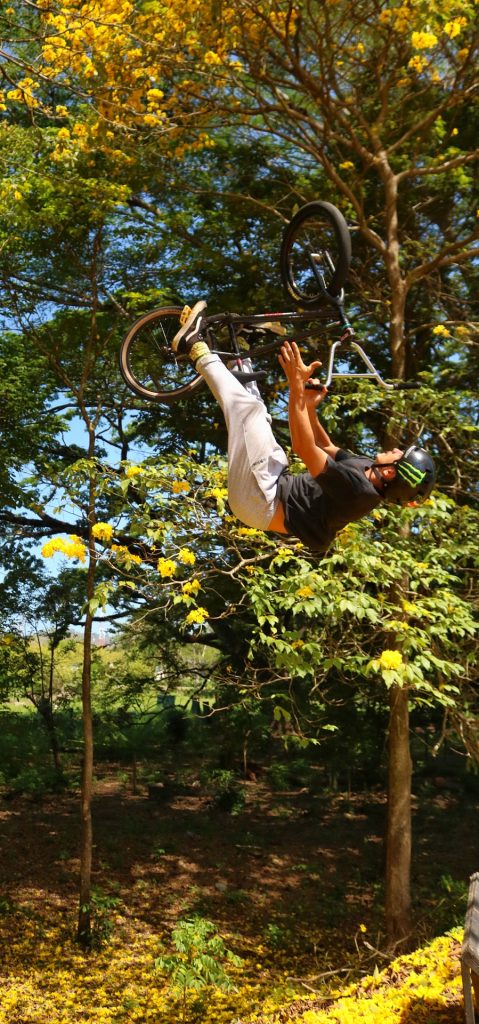
Now 27, he lives and trains in the Pacific coastal town of Jacó, Garabito next to his friend and neighbor Kenneth Tencio. That’s a name known by just about every Costa Rican, after Kenneth placed fourth at the Tokyo Olympics this summer. It was the best-ever Olympic finish by a Costa Rican man, and the image of the airborne cyclist had people across the country Googling “BMX freestyle” for the first time. Kenneth, also 27, is from Garabito and, at the parade that welcomed him home after his Olympic feat, was given land from the local municipality to create a BMX freestyle park.
Watch Kenneth and Giancarlos together:
To the watching public, this seemed like the least that could be done for an Olympic hero. However, it was an unheard-of level of support for athletes such as Kenneth and Giancarlos who, like most BMX freestylers, had been labeled as time-wasters or even potheads for much of their careers.
“He’s had support. Now, he has sponsors,” says Giancarlos’s dad, Ademar Ramírez—who, like his wife, is better known in Bijagua by his nickname, Mema. The couple own and run Mema’s Pizza, a bakery and delivery-only pizza place in town, and are speaking to me during a few minutes set aside from their nightly deliveries. “But at the start, he had to claw against the world in order to rise.”
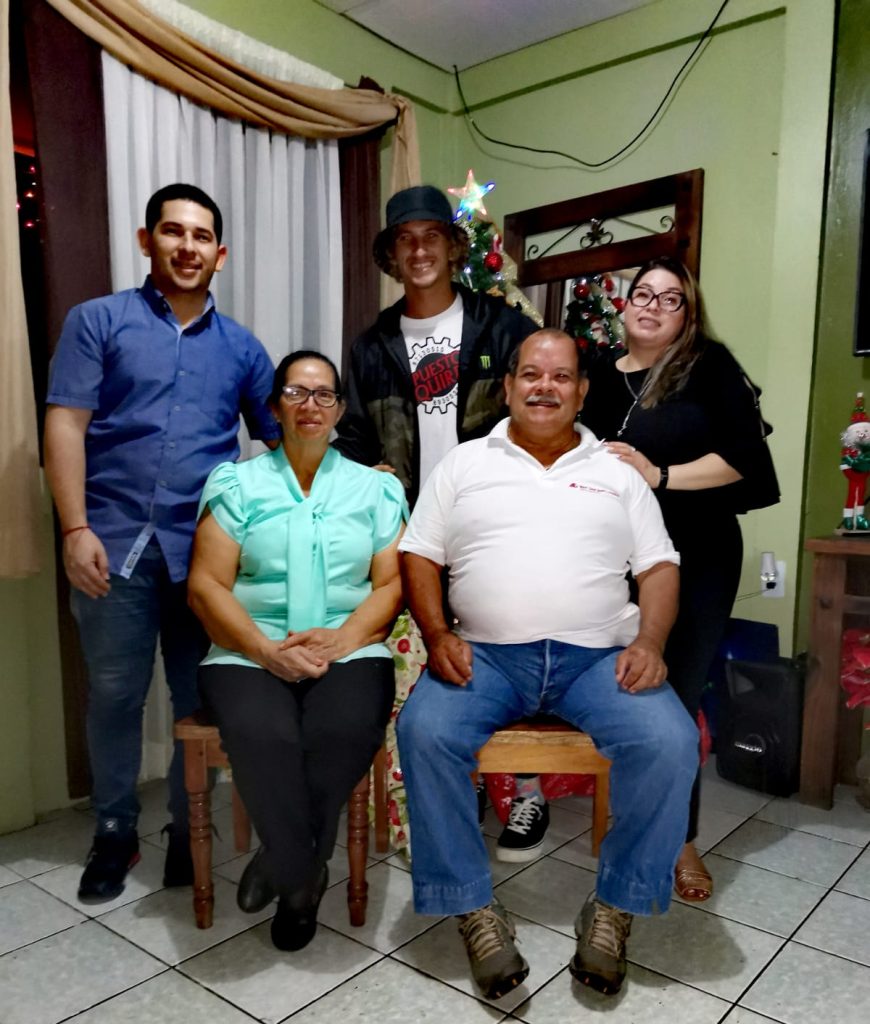
Talent? First, organization
Minor Monge of the the Costa Rican Sports and Recreation Institute (ICODER), explains that before any of the sports or sectors we’re highlighting in our longforms this month—women’s soccer, BMX freestyle, surf, and the Paralympics/para-athletes—could rise to prominence, someone had to create an association to support athletes in that sport.
Once multiple associations are created, they can join forces to form a federation. And federations are the entities that lobby for resources, position their athletes before ICODER and the country’s Olympic Committee, and generally enable a flow of attention and financial support to the sport they represent.
So extraordinary talent can’t just leap out of nowhere and attract resources like a bee to honey. Careful organizational planning and representation is key, Minor says.
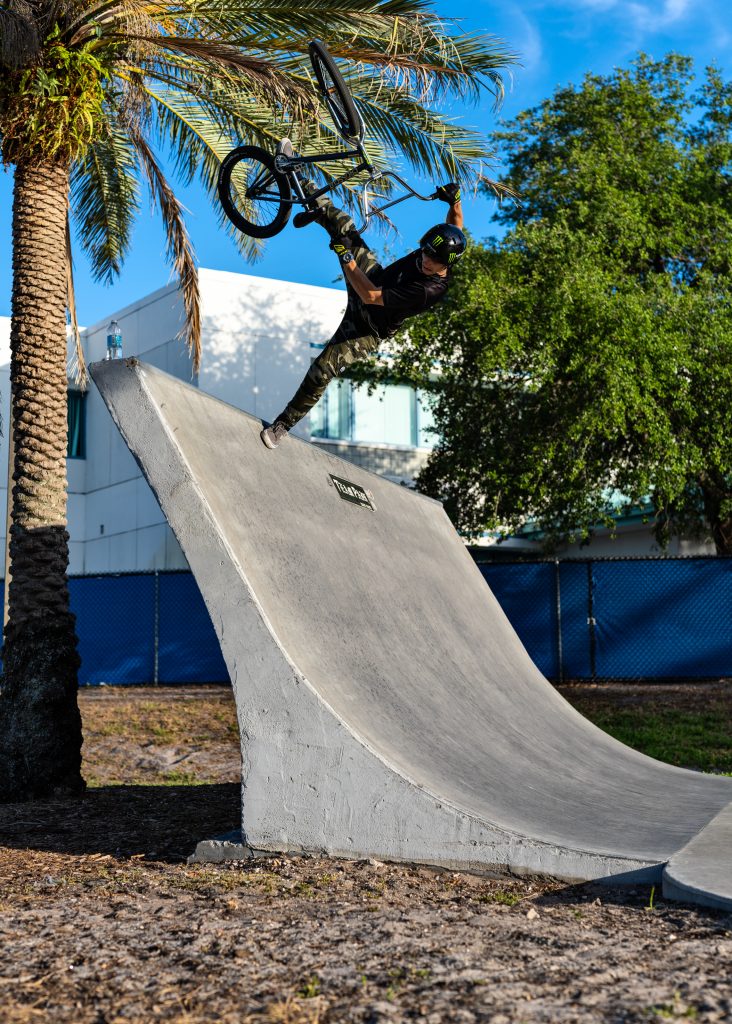
Minor tells me that while ICODER coordinates actions related to sports and recreation in Costa Rica, it’s not in charge: “ICODER has a leadership role, but not authority.” Instead, the institute has a board that includes the Ministries of Sports, Education, Health, along with representatives from universities, federations, the Olympic Committee, the Paralympic Committee, municipalities, and associations for athletes with disabilities.
What’s more, this group must then coordinate with other organizations, from the Public Security Ministry to the Rural Development Institute.
“There are about 30 institutions we have to interact with,” Minor explains. In such a complex world, even an extraordinary raw talent needs organizational backing in order to be heard. Once they’ve got that, they can eventually access resources from ICODER such as individual athlete monthly grants (offered to athletes in every sport except men’s soccer), the institute’s gym and medical staff—and their federations can access a piece of the institute’s annual budget for federation support.
Oscar Ávila, president of the Costa Rican Cycling Federation, explains that today, BMX freestyle has its own association, and, three years ago, the association became a part of the Cycling Federation. That means that the BMX Freestyle Association has a seat on the Cycling Federation board and can serve as a voice for the sport at the highest level.
However, when Giancarlos, Kenneth, and other athletes were developing their skills, they didn’t have this voice. When that’s the case, support must come from municipal sports committees. And in Giancarlos’ case, it didn’t. His family says that he and they approached every local association and municipal committee they could think of, but no one was willing to invest in BMX freestyle. His brother Hairol explains that in Bijagua, so close to the border with baseball-loving Nicaragua, soccer is actually not the king. Local resources also go to baseball. In this town as around the country and probably most of the world, sports like BMX freestyle are outliers.
Some people “even treated him like he was a pothead, a drug addict because of his [athletic] activities, when really he’s a person who’s never had vices,” Hairol says. “He’s stubborn, in a good way… he’s so disciplined. When he comes home he breaks his diet just a little, he maybe leaves with a few extra kilos, but he’s so careful about what he eats, and trains day and night. That has helped him improve and move up.”
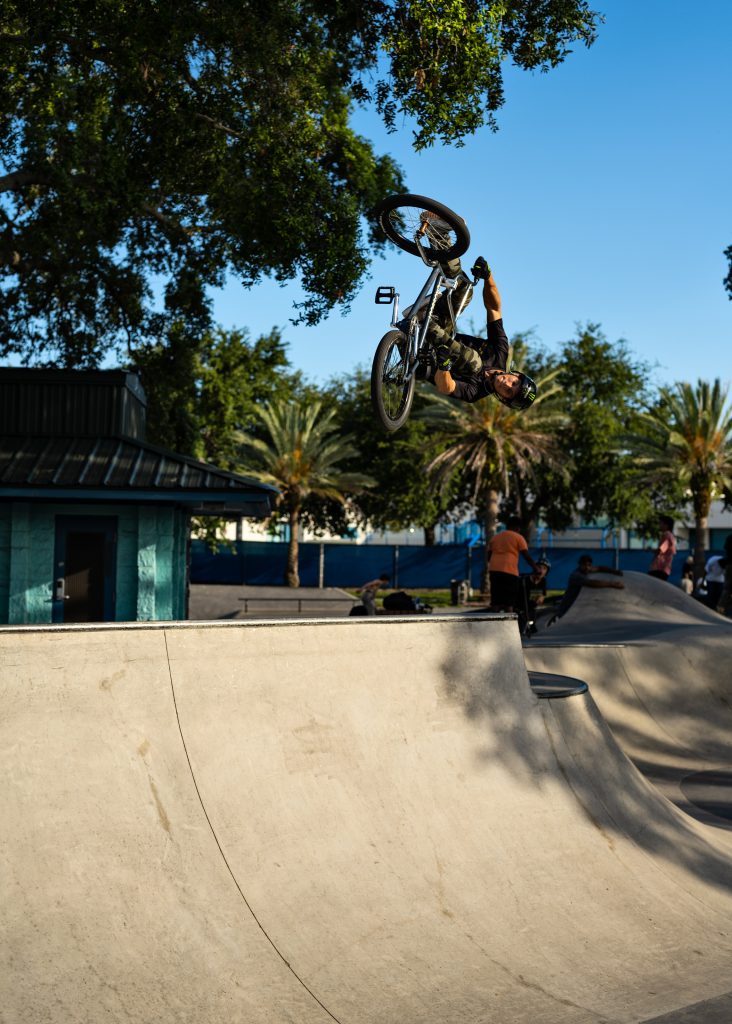
“The earlier you get up, the more you get out of the day,” Giancarlos instructs me over Zoom from his home in Jacó, clearly relishing the opportunity to show exactly what his career entails. He explains that he usually gets up at 5:30 am and, on weekdays, is at the gym by 6:30 for a weight routine, either arms or legs, or running, or mountain biking. He heads home, gets in some protein, does chores and errands—or interviews, or other tasks related to his sponsorships and career—and, after lunch, trains from 2 to 6 pm at the skate park. He aims for bed by 9 pm to start it all again.
He says that many of the present advantages in his career, including partnerships with sponsors such as Monster Energy which has provided a $100 monthly stipend for him, stemmed from a crucial competition he attended in 2017. He’d moved into House of Dirt, a BMX and MTB compound in Atenas where promising athletes like Giancarlos can work, train and board, and had been invited to the Latin American championships in Mexico. He showed the invitation to his sister Kerlyn, she showed it to the rest of his family, and together, they managed to scrape together the money for the plane ticket, Giancarlos’ first ever. While he had no idea how he’d afford lodging or food once he arrived, he decided to go for it anyway.
“I didn’t have enough money, but you have to take a risk,” he remembers. “But, diay, everything turned out all right. I went to see my parents, and the people… in Bijagua had done a collection, and with that money I had enough. I didn’t know what to do, whether to cry, or what. My bike wasn’t so good—there were broken parts that I’d welded—and with that money I even had enough to buy a new part.”
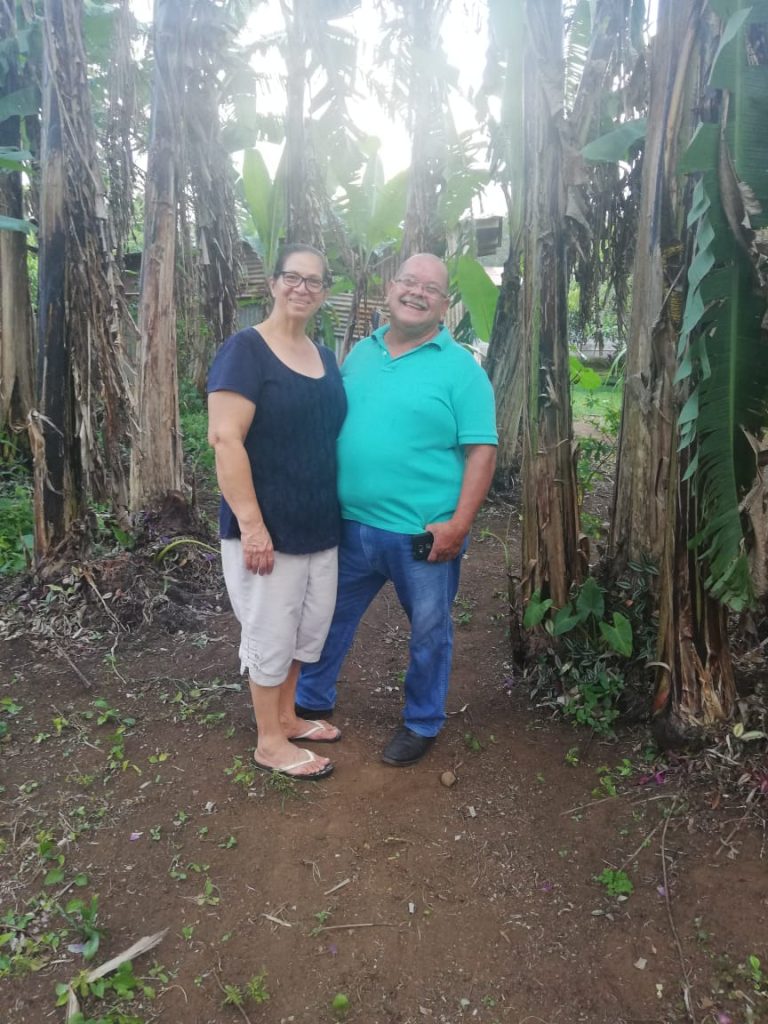
Giancarlos made the trip (”I’d never traveled! I didn’t even know where to go into the airport at SJO!”). At the event, he placed fifth in Latin America. Later that year, at another event in Mexico, he placed fourth. Since then, he’s been flying high, and was able to move to Jacó to take his training to the next level with Kenneth Tencio living next door. However he keeps his hometown, and above all, his family, in mind.
“My sister always supported me so much. My whole family, really,” he says. “I’m always so grateful to the people from my town, and when there are celebrations there, I try to take friends home with me to do tricks and talk about my sport.”
As he talks about the work necessary to obtain and manage sponsorships and, of course, cultivate a social media following, it’s clear that this son of Mema’s Pizza is not only an athlete, but also an entrepreneur, like his parents.
“I’ve started working with other sponsors on the national level, and national support is a good thing,” he says. “Now that [BMX] is getting better known, people will start to support it more. But we need more people… there’s so much talent in Costa Rica. Soccer gets so much support, and other sports, not so much. There are people doing cycling, long jump, skate, scooter, BMX; there are so many people with talent. The problem is that they don’t get support.”
What’s next?
Cycling Federation President Oscar Ávila says that the next steps to make the path easier for future BMX freestyle cyclists is clear: municipal investment in BMX parks.
“We’ve got the talent. We just don’t have the infrastructure,” he says. While the Federation is working on plans to create an independent cycling facility in Santa Ana, west of San José in Costa Rica’s Central Valley—complete with tracks, a high performance center, mountain biking trails, and parks for BMX racing and BMX freestyle—he says this is no substitute for municipal parks.
Asked to name a municipality that is leading the way in this regard, he says he can’t really think of one.
“We need local governments to develop freestyle in all the local parks. The Federation can support them and co-develop projects, but we don’t have the finances or the space to do it ourselves,” he says. “If we don’t have anywhere to practice, for young people to learn, then we’re done.”
Hairol, Giancarlos’ brother, agrees that support from each canton’s sports committee is key. In Bijagua, he says kids today do what’s called BMX streets, which basically means using whatever they can find: imagine parkour on a bike, jumping from a rail here, a natural slope there. This contributes to the image of these athletes as “bums,” “vagos,” or drug addicts, and, of course, limits their growth.
Mema, Giancarlos’ dad, shrugs off the idea of these athletes as drug addicts. The opposite is true, he says: “I’d tell parents to get involved in whatever sports their kids want to participate in… any sport they do will take them farther away from the things we don’t want for them. Let’s walk hand-in-hand with them so they can get ahead, because those things will take the kids away from other things we don’t want them to do.”
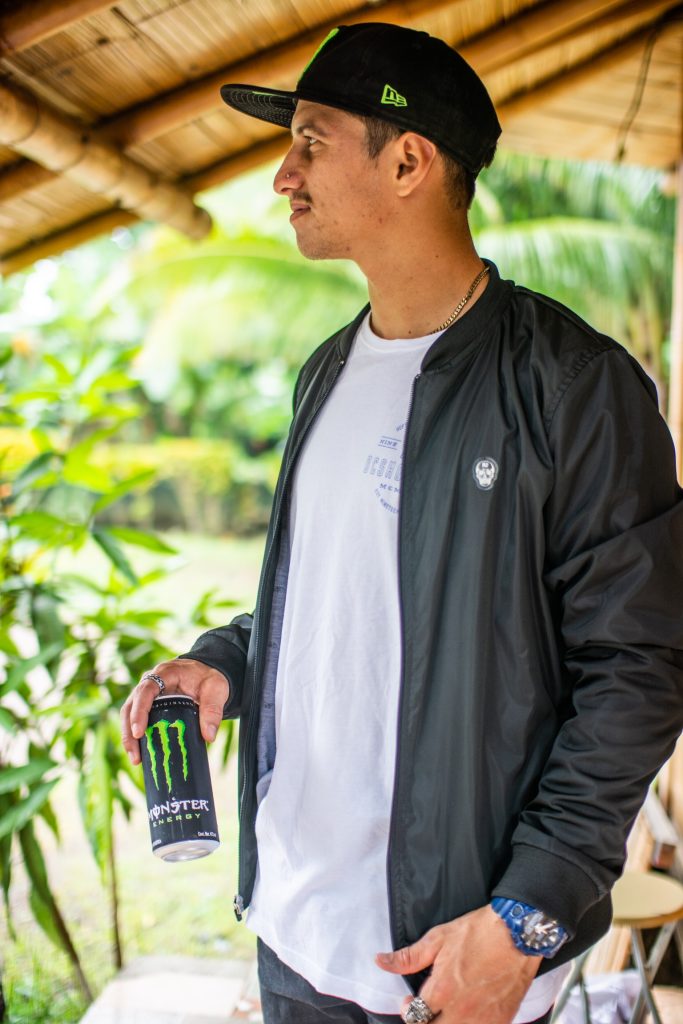
Giancarlos himself dreams of qualifying for the 2024 Olympics (“Vamos a entregar todo por el todo,” he says. We’re gonna give it all, to get it all). He also dreams of following in Kenneth’s footsteps in another way: by creating a skate park in Bijagua or nearby Upala, if he can find partners for the project. Why? Because he’s learned that once a sport grabs you, you shouldn’t resist.
“Lots of people just work away and that’s fine. You have to pay for your house. You have to survive,” he says, remembering the moment he finally decided he needed to leave his day job and focus on his training full time. “But there are lots of people who don’t try, and will spend their whole lives asking themselves what could have happened. You have to take a risk and go for it… you’ll finish your life happy, which I think is what matters most.”
His mother, beaming and nodding next to his father on the family couch back in Bijagua, is clearly on board with this. She even predicts that one day soon, she’ll open her eyes.
“There will come a time when I will watch him live,” says doña Tey. “Once I feel a little safer.”





